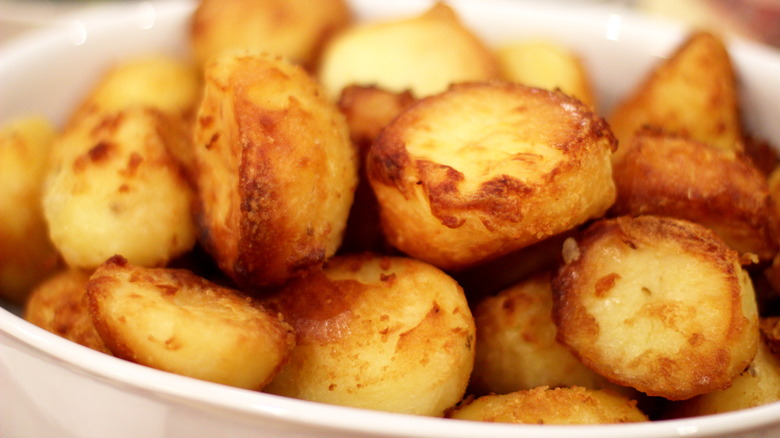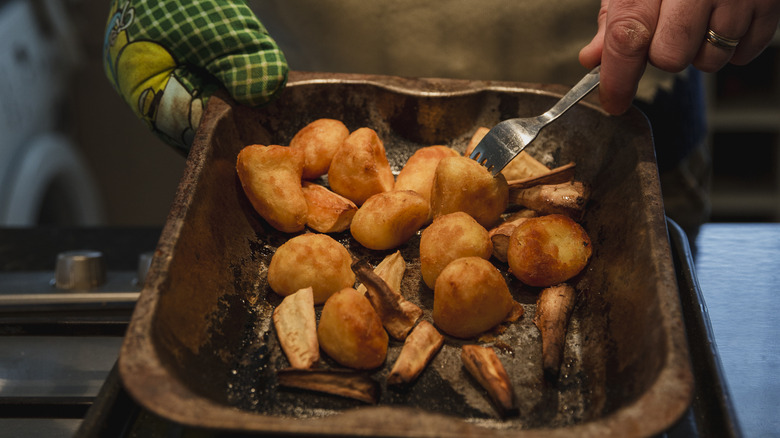Why You Need To Stop Flipping Roasted Potatoes Too Early
Our grandmothers never measured while cooking, and we all remember their food fondly, right? It wasn't until the late 19 century that a standard unit of measurement was used in the written recipe, thanks to Catharine Beecher, who argued cooking should be more scientific and methodical. Still, many believe only baking requires exact measurements and following a recipe (via Women's History).
While it is more noticeable when you've missed an ingredient or improperly measured when baking a cake, other forms of cooking can be significantly improved upon when you learn the science behind delicious results. Grandma's cooking (although yummy, I'm sure) has a heavy dose of nostalgia and would likely improve if Grandma knew the science responsible for coaxing more flavor or better texture from our ingredients.
Perfectly roasted potatoes are one of those recipes that most home cooks throw together on a sheet pan without measuring. However, learning which potato roasts the best, how big the pieces should be cut, and what to add to create the crispiest potato on the outside with a tender, fluffy inside can majorly elevate your roasted potatoes and transform this simple, humble side dish into bragging rights at your next dinner party (per Food and Wine). While the science behind the Maillard Reaction is complicated, it is responsible for "transforming raw ingredients into a better sensory experience," creating the complex flavors and textures we want. Knowing how to manipulate the reaction, including when to flip roasting potatoes, is a game changer.
Step away from the potatoes
According to Serious Eats, for the crispiest exteriors and creamy, tender insides, begin with Yukon Gold or Russet potatoes and save the blue, purple, or red potatoes for another dish. Peel and cut the potatoes into large "two-biters" to allow the exterior enough time to crisp without fear of the potato falling apart. Although it sounds counterintuitive, partially cooking the potatoes in alkaline water before roasting them draws out moisture from the spuds, allowing them to brown easier. The enemy of crispiness is moisture. Add a half teaspoon of baking soda to two quarts of salted boiling water to break down the exterior of the potatoes and bring the starch to the surface. The added step produces a crust on the potatoes when tossed with oil and roasted in a hot oven.
The final step, roasting the potatoes, should be the easiest, but it can be challenging for some. According to Eating Well, most people flip roasted potatoes too soon, resulting in food sticking to the pan. When potatoes have developed a nice crust, they will release from the pan easily. If the potato resists, step away and allow them to cook longer. Depending on the size of the potato, it could take up to 20 minutes to achieve the Maillard Reaction. Using tongs, a spatula, or mom hands, flip the potatoes and allow the other side to cook for another 10 minutes or until browned and releases easily for crispy roasted potatoes.

